CPR is an important skill to know in case of an emergency. Bystanders who are trained in CPR can save lives by providing potentially life-saving interventions.
The steps for performing CPR are relatively simple and straightforward. However, it is important to have a clear understanding of the process before attempting to provide assistance in an emergency situation.
What Is CPR?
CPR is a way to help people who have stopped breathing. CPR stands for Cardiopulmonary Resuscitation. If you know how to do CPR, you could save someone’s life by helping them breathe again.
When Should You Do CPR?
CPR should be performed on someone who:
- is unresponsive
- not breathing normally (agonal gasping) or appears not to be breathing
How To Do CPR
The steps for doing CPR are the same for adults and children. However, there are a few important differences to keep in mind.
CPR On Adults
CPR is an important skill to know in case of an emergency. Bystanders who are trained in CPR can save lives by providing potentially life-saving interventions.
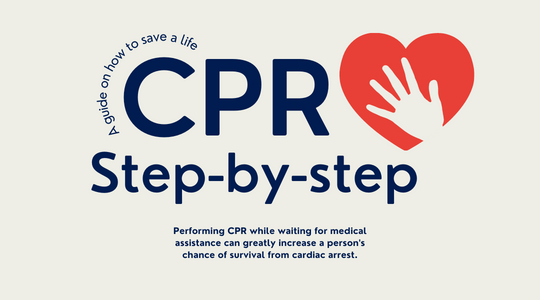
The steps for performing CPR on adults are relatively simple and straightforward, but it is important to have a clear understanding of the process before attempting to provide assistance in an emergency situation.
- Kneel next to the person and place the heel of your hand on the breastbone at the centre of their chest. Place the palm of your other hand on top of the hand that’s on their chest and interlock your fingers.
- Position yourself so your shoulders are directly above your hands.
- Using your body weight (not just your arms), press straight down by 5 to 6cm (2 to 2.5 inches) on their chest.
- Keeping your hands on their chest, release the compression and allow their chest to return to its original position.
- Repeat these compressions at a rate of 100 to 120 times a minute until an ambulance arrives or for as long as you can.
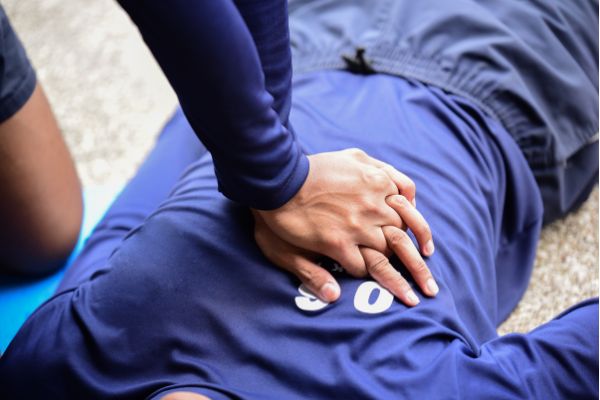
CPR With Rescue Breaths
When it comes to CPR, most people are familiar with the basics: providing chest compressions in an effort to keep a person alive until paramedics arrive.
However, many people are not aware of the importance of rescue breaths when performing CPR. In fact, providing rescue breaths is just as important as providing chest compressions.
- Place the heel of your hand on the centre of the person’s chest, then place the palm of your other hand on top and press down by 5 to 6cm (2 to 2.5 inches) at a steady rate of 100 to 120 compressions a minute.
- After every 30 chest compressions, give 2 rescue breaths.
- Tilt the person’s head gently and lift the chin up with 2 fingers. Pinch the person’s nose. Seal your mouth over their mouth and blow steadily and firmly into their mouth for about 1 second. Check that their chest rises. Give 2 rescue breaths.
- Continue with cycles of 30 chest compressions and 2 rescue breaths until they begin to recover or emergency help arrives.
DID YOU KNOW?
In 2018, 59% of members of the public reported having received training in CPR and 19% in how to use an automated external defibrillator (AED).
Resuscitation Council UK
CPR On Children
When performing CPR on a child, the process is generally the same as for an adult. However, there are a few things you should remember….
Under 1 Years Old
- Open the infant’s airway by placing 1 hand on their forehead and gently tilting the head back and lifting their chin. Remove any visible obstructions from their mouth and nose.
- Place your mouth over the infant’s mouth and nose and blow steadily and firmly into their mouth, checking that their chest rises. Give 5 initial rescue breaths.
- Place 2 fingers in the middle of the infant’s chest and push down by 4cm (about 1.5 inches), which is approximately one-third of the chest diameter. The quality (depth) of chest compressions is very important. Use the heel of 1 hand if you can’t achieve a depth of 4cm using the tips of 2 fingers.
- After 30 chest compressions at a rate of 100 to 120 a minute, give 2 rescue breaths.
- Continue with cycles of 30 chest compressions and 2 rescue breaths until the infant begins to recover or emergency help arrives
Aged Between 1 and 18
- Open the child’s airway by placing one hand on their forehead and gently tilting their head back and lifting the chin. Remove any visible obstructions from their mouth and nose.
- Pinch the child’s nose. Seal your mouth over their mouth, and blow steadily and firmly into their mouth, checking that their chest rises. Give 5 initial rescue breaths.
- Place the heel of one hand on the centre of the child’s chest and push down by 5cm (about 2 inches), which is approximately one-third of the chest diameter. The quality (depth) of chest compressions is very important. Use 2 hands if you can’t achieve a depth of 5cm using 1 hand.
- After every 30 chest compressions at a rate of 100 to 120 a minute, give 2 breaths.
- Continue with cycles of 30 chest compressions and 2 rescue breaths until the child begins to recover or emergency help arrives.
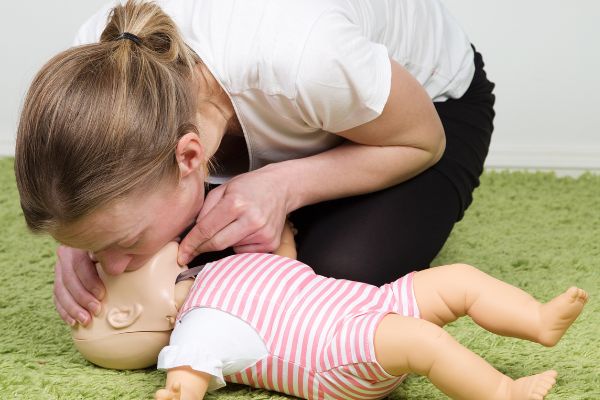
CPR in an Emergency
If someone collapses in front of you and is unresponsive, not breathing normally (agonal gasping) with no obvious signs of life, then you should call 999, 112 or from most mobiles 911 immediately and start CPR.
If you’re trained in CPR, follow the latest resuscitation guidelines from the Resuscitation Council (UK). If you’re not trained in CPR, then you should still call 999 and give chest compressions only.
The dispatcher will talk you through what to do.
When to stop CPR
CPR should only be stopped when:
- The casualty begins to show signs of life, such as coughing or moving
- Emergency services arrive and take over
- You become too exhausted to continue
- The scene becomes unsafe
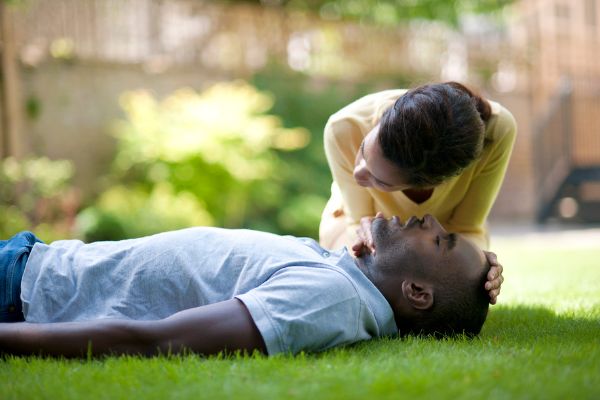
2021 Resuscitation Guidelines UK
Every year, the Resuscitation Council (UK) updates its guidelines on resuscitation. The latest guidelines were published in 2021 and are based on the latest evidence.
Changes, from 2015, are as follows:
More emphasis on chest compressions
For adults, chest compressions should now be given before rescue breaths. In children, 30 chest compressions should be given before 2 rescue breaths.
New CPR ratio
For adults, the new recommended ratio is 30 chest compressions to 2 rescue breaths. For children, it’s 30:2.
AEDs for children
Automated external defibrillators (AEDs) can now be used on children aged 1 to 8 years old. Specifically designed Paediatric AED pads should be used.
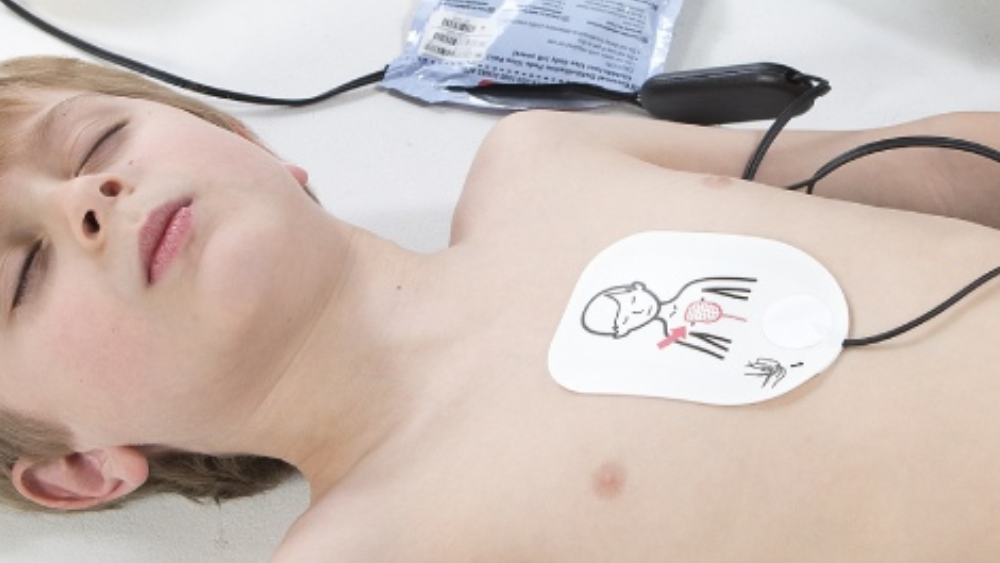
Continuous chest compressions
If rescue breaths are not being given, chest compressions should now be given continuously at a rate of 100 to 120 per minute.
You can read the full guidelines on the Resuscitation Council website.

Where To Learn CPR
At Lightning Training Solutions, we offer a number of courses which teach CPR.
These include:
- Basic Life Support (BLS) for professionals and Automated External Defibrillation (AED)
- First Aid At Work (FAW)
- Emergency First Aid at Work (EFAW)
- Paediatric First Aid
Blended First Aid Courses
We also offer a timetable of blended (Online and Classroom) first aid courses, some of which include CPR training and life support.
Course | Day 1 | Day 2 | Day 3 |
First Aid at Work | Online or Classroom | Online or Classroom | Classroom |
First Aid at Work Refresher/Re-qualification | Online or Classroom | Classroom | n/a |
Paediatric First Aid | Online or Classroom | Classroom | n/a |
FAQs
How many compressions for CPR?
For adults, the recommended ratio is 30 chest compressions to 2 rescue breaths. For children, it’s 30:2. If rescue breaths are not being given, chest compressions should now be given continuously at a rate of 100 to 120 per minute.
What is the depth for CPR compressions?
The quality (depth) of chest compressions is very important. The recommended depth for chest compressions is 5cm (about 2 inches), which is approximately one-third of the chest diameter. Use 2 hands if you can’t achieve a depth of 5cm using 1 hand.
How often should CPR be given?
CPR should be given at a rate of 100 to 120 compressions per minute. If rescue breaths are not being given, chest compressions should now be given continuously at a rate of 100 to 120 per minute.
Can I use an AED on a child?
Yes, Automated external defibrillators (AEDs) can now be used on children aged 1 to 8 years old.
Can I do CPR if I’m not trained?
If you’re not trained in CPR, then you should still call 999 and give chest compressions only. The dispatcher will talk you through what to do.
Why Choose Lightning Training Solutions?
Selecting a First Aid Training Provider
As an Employer, you have a number of options available to you when selecting a First Aid Training Provider. HSE does not advocate, promote or support any particular option. You should select the most suitable option for your requirements.
The chart below summaries the Health and Safety Executive (HSE) GEIS 3 Document, which the HSE has developed, to assist Employers when choosing a First Aid Training Provider.
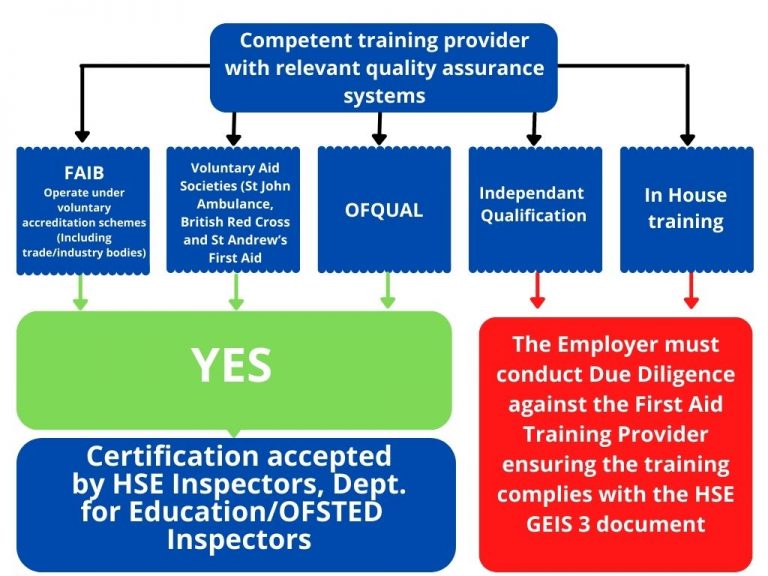
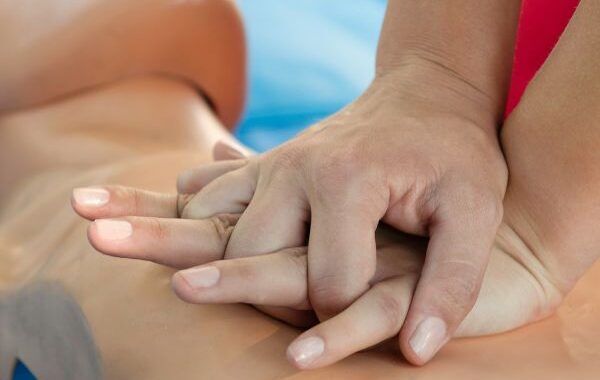
Pingback: Training AEDs: Get The Training You Need To Save A Life - Lightning Training Solutions Blog
Pingback: Upcoming Open First Aid Training Courses in Somerset - Lightning Training Solutions Blog
Pingback: Essential Seizure First Aid Training - Lightning Training Solutions Blog